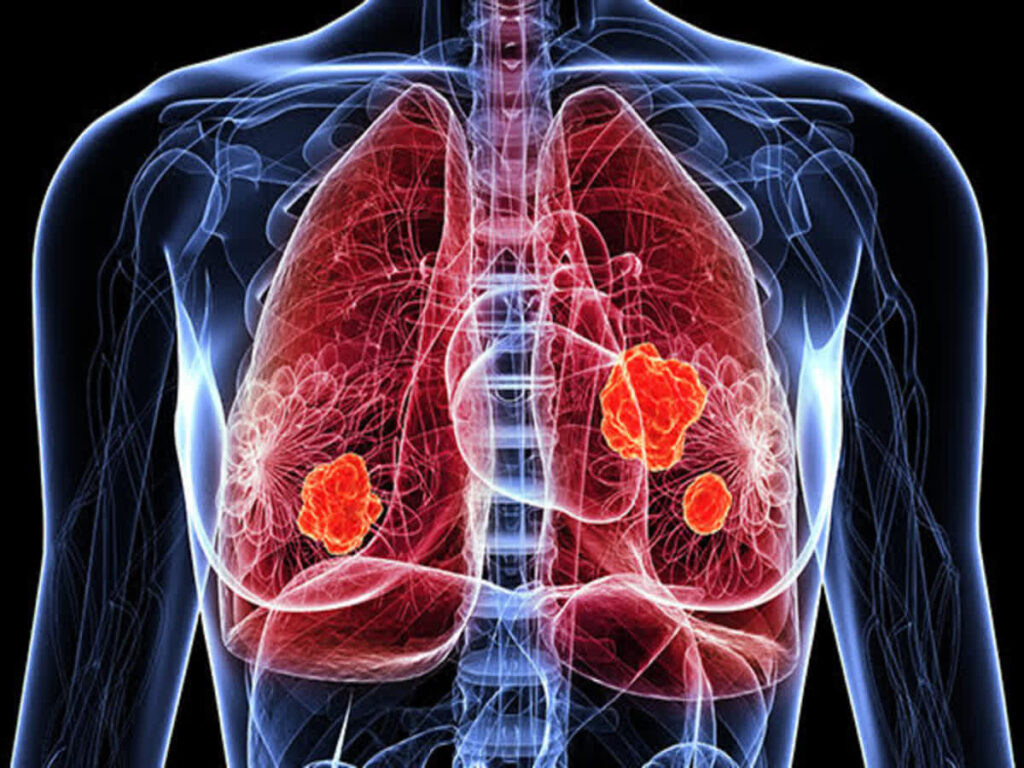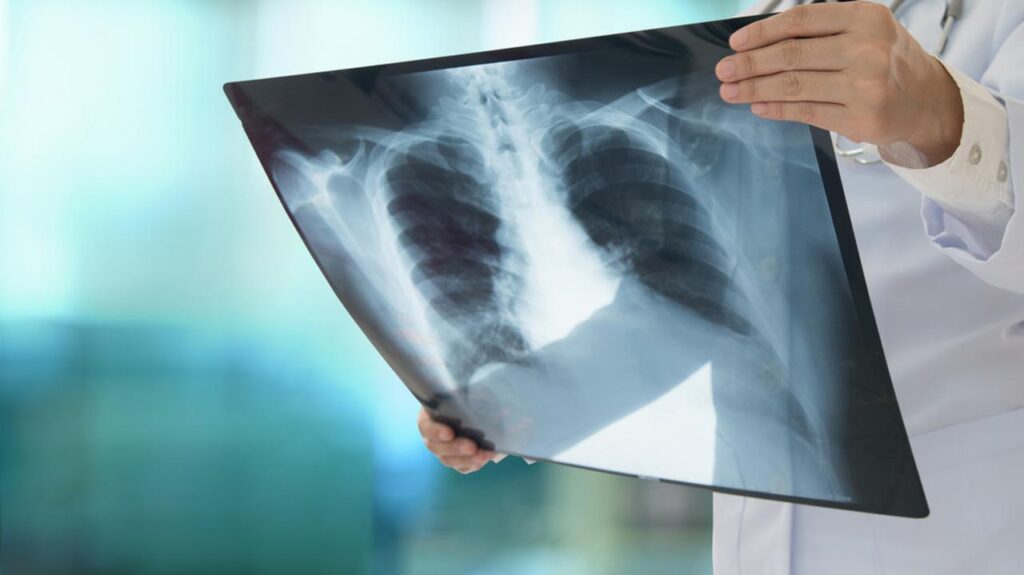Lung cancer, also known as lung carcinoma, is the number one leading cause of cancer deaths worldwide in both women and men; averaging over 2.1 million new cases a year. People who smoke have the greatest risk of developing lung cancer (about 72% of cases), although lung cancer can also occur in people who have never smoked. Unfortunately, many people aren’t diagnosed until the disease has advanced and spread, as signs only become more obvious later on.
Related Ads:
There are, however, some recurring signs and symptoms that have been seen in the majority of people with lung cancer. Read on to learn more about the signs and symptoms of lung cancer, and how early precautions may help people at high risk of the disease detect it sooner.

There are two main types of lung cancer. These are categorized by the type of cells that the cancer starts growing:
non-small-cell lung cancer – the most prevalent form, responsible for more than 87% of cases; Squamous Cell Carcinoma, Adenocarcinoma or Large-Cell Carcinoma.
small-cell lung cancer – faster spreading form, less common than non-small cell
The type of lung cancer you have determines what symptoms, if any, you will have as well as what treatments are recommended.
Early Signs and Symptoms of Lung Cancer:
Unfortunately, there are usually no signs or symptoms in the early stages, as symptoms tend to develop as the condition advances. However, when lung cancer does produce symptoms/signs in its early stages, they can differ from person to person. They more often than not include:
Coughing – if you develop a new cough that doesn’t go away, produces blood, or progressively gets worse
Sudden weight loss – sudden weight loss and loss of appetite
Pains in the chest, back, or shoulders – especially when coughing, laughing or deep breathing
Breathlessness – having difficulty breathing and catching your breath
Hoarse/raspy voice – sudden and significant change in your voice
Swelling – of the face, arms or neck
Headaches – dizziness, or limbs that become weak or numb
Difficulty swallowing – or pain when swallowing (dysphagia)
Infections (Bronchitis & Pneumonia) – that are persistent
Yellowing of the skin and eyes (jaundice) – this is a sign that the cancer has spread to the liver (seek immediate medical attention)
Please keep in mind, many of these symptoms can be a factor of other conditions, as they are very typical, common and mild. There is a chance these symptoms are likely to be caused by something other than lung cancer. However, if you do have any of these symptoms, it’s important to see your doctor right away so you can rule out lung cancer, and if needed get medical treatment as soon as possible.
Related Ads:
Causes & Risk Factors
It is important to keep in mind that anyone can get lung cancer, however there are various risk factors that can make your chances higher.
Smoking
Smoking is the number one cause of lung cancer (90%). Nonsmokers also can be affected by breathing in secondhand smoke. Not only does smoking make you more susceptible to lung cancer, but other illnesses as well.
Improve your odds:

- Don’t begin smoking
- Try and quit smoking
- Try and avoid secondhand smoke
Radon
Exposure to Radon is the second leading cause of lung cancer. Radon is a clear, radioactive gas that is found in soil. Radon is dangerous as it emerges through the soil and enters buildings and homes through little gaps and cracks – without any knowledge or warning. Radon exposure is very common in the U.S, with 1 in every 15 homes being victim to this dangerous inconspicuous gas.
Improve your odds:
- Test your home and soil for radon
Genes
Genetic factors also play a big role in one’s likeliness of getting lung cancer. One’s family history of diseases (lung cancer) may give you a greater chance of getting it. It is really important to tell your doctor if anyone in your family has lung cancer.
Improve your odds :
Get regular checkups at the doctors and be aware of the above warning signs/symptoms
Pollution exposure:
Being exposed to specific chemicals that are commonly found and used in many industries/occupations can make you more at risk to getting lung cancer. Some of the chemicals include:
- Nickel
- Silica
- Arsenic
- Asbestos
- Beryllium
- Cadmium
- Coal and coke fumes
Improve your odds:
Be cautious and abide by whatever precautionary rules your employer’s tell you. You can also always ask your doctor for advice on protecting yourself at work.

Diagnosis:
How to test, diagnose and detect lung cancer:
Diagnostic tests and screening are the best diagnosis for anyone who shows symptoms that could suggest lung cancer. The diagnostic trials are:
· Imaging assessments such as an X-ray, CT, MRI, or PET scan could show parts of the lung tissue affected or cancer.
· Tissue selection involves biopsy tests to check for any cancer cells.
· Other samples like laboratory tests could show lung cancer through pleural effusion, sputum, and blood tests.
Treatment:
The type of treatment you receive for lung cancer depends on several factors: including the type of lung cancer you have, the size/position of the cancer, what stage (how advanced your cancer is, and your overall health.
The treatment of lung cancer is easier when the disease is at its initial stage.
· Surgery to remove a part of the lung that’s infected.
· Chemotherapy sessions to kill cancer cells and reduce the tumors
· Radiotherapy contains high-powered emissions that incapacitate cancer cells.
· Targeted therapy focuses on precise behavior.
· Immunotherapy and palliative therapy for pain relief and managing symptoms.
The sad truth is that lung cancer can really affect anyone, while sometimes not showing signs until it has become widespread. Therefore it’s imperative to maintain a healthy lifestyle and stay away from smoking to prevent developing this disease. Once again, you should see a doctor immediately if you notice any of the symptoms mentioned above and be aware of your body’s overall health and well-being.